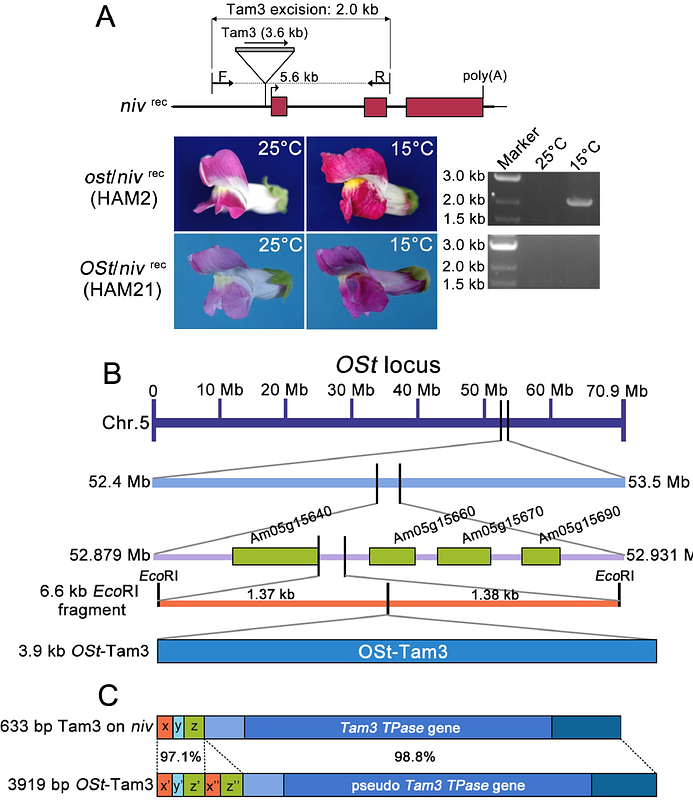Two Stabiliser loci in Antirrhinum suppress the transposition of Tam3 without compromising transposase production

Two Stabiliser loci in Antirrhinum suppress the transposition of Tam3 without compromising transposase production
Wang, S.; Uchiyama, T.; Kuwabara, H.; Hirata, M.; Yuasa, I.; Nakahara, K.; Martin, C.; Kishima, Y.
AbstractAntirrhinum majus has been known to exhibit occasional instabilities that are manifested as variegations and morphological chimeras. Stabiliser (St) is a historical locus that stabilizes phenotypically unstable or mutable traits in Antirrhinum. Here, we characterized two St loci, the previously described Old Stabiliser (OSt) and New Stabiliser (NSt), in Antirrhinum that specifically suppress the transposition of the Class II DNA transposable element, Tam3. Both St loci involve derivatives of Tam3 with unique structures: OSt has a pseudo-Tam3 copy whose 5\'-terminal region has been rearranged compared to the cognate Tam3 element, and NSt consists of two intact copies of Tam3 in a head-to-head orientation. Neither locus interferes with the production of the intact Tam3 transposase (TPase) or the nuclear import of TPase. Both OSt and NSt produce specific sRNAs from their 5\' terminal regions containing multiple TPase binding motifs. These specific sRNAs could repress Tam3 transposition by interacting with the TPase binding motifs within the Tam3 element or with the TPase itself.


